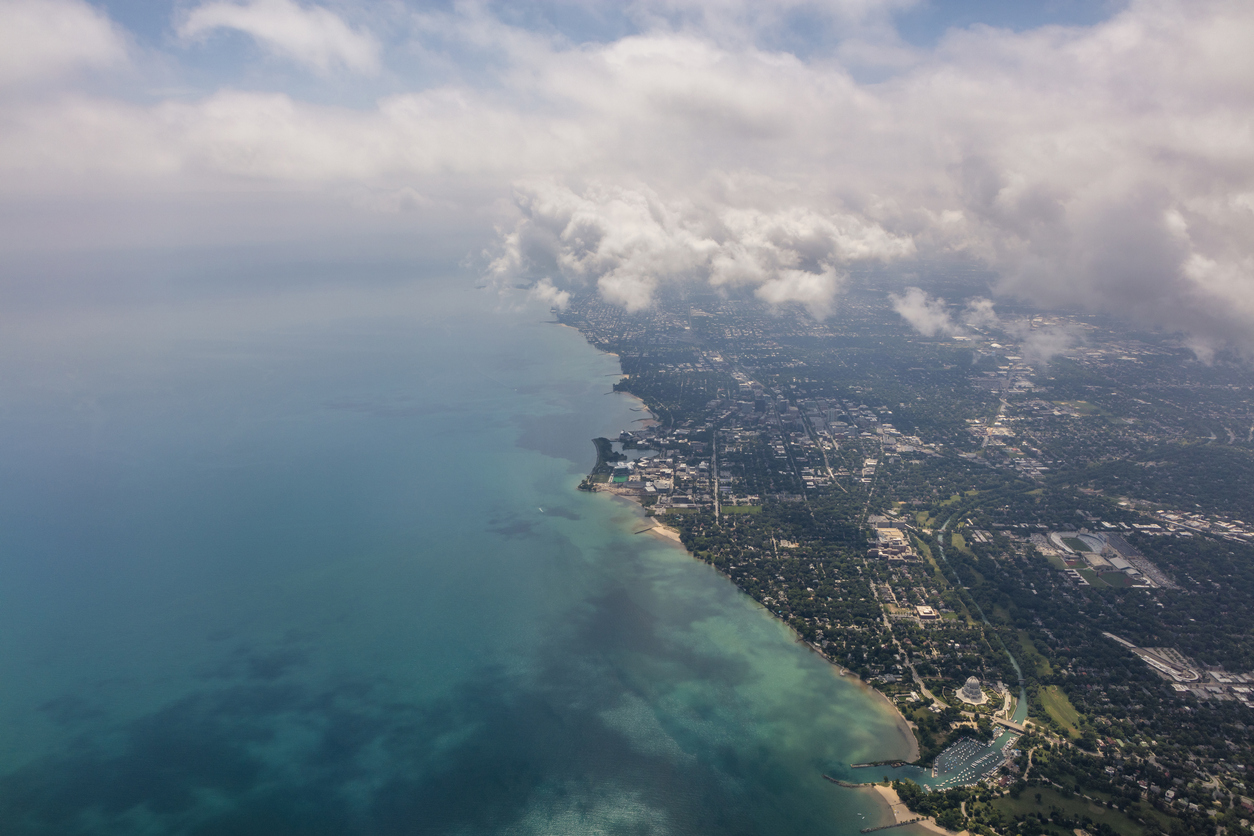The erosion transformed what was a grassy slope to the shoreline into a cliff with a 12-foot drop, taking out a lakeside deck and stopping about 10 feet short of the Brengels’ septic pipes. Their neighbor fared worse. Water battered the back of that home and washed away the yard.
“If there’s another big storm, we’re going to be finished,” Ms. Brengel said as she walked what was left of her yard earlier this month. “If we lose our septic, we might as well fold.”
Record and near-record water levels in all five Great Lakes are resulting in tens of millions of dollars in damage from Minnesota to New York as eroding shorelines and monster waves cause homes to plummet into the water, public piers and lakeside trails to crack and crumble, and parks and properties to flood.
The high levels come after several years of above-average rains and snowfall in the region. Last year was the wettest on record for the Great Lakes and the second wettest across the continental U.S., according to federal data. Forecasts from the U.S. Army Corps of Engineers show the elevated lake levels persisting through at least July.
Lakes Huron and Michigan set record lows in early 2013—an unprecedented swing, said Drew Gronewold, an associate professor at the University of Michigan’s School for Environment and Sustainability. He said the warming climate is exacerbating both precipitation and evaporation, the two main forces affecting lake levels. “My eyes are open right now that water levels may continue to swing like that,” he said, but the question needs more study to make better predictions about what might happen next.
Lauren Fry, a hydrology expert with the Army Corps’ Detroit District, said that while all but Lake Ontario are expected to set records at some point between now and midsummer, the situation might be most acute on lakes Michigan and Huron. The two lakes are predicted to break their water-level records by 4 to 7 inches each month between now and July.
“If we have wetter conditions, it could be more. If we have drier conditions, it could be less,” Ms. Fry said.
Jeff Yoakam, an emergency-management specialist with the Army Corps’ Detroit District, said his office has been providing technical expertise to 12 counties in Michigan and six in Wisconsin, and he expects more to request help.
Earlier this month, his team had a conference call with representatives from Duluth, Minn., where officials estimate it will take $30 million to fix damage to the shoreline, a boardwalk and other public infrastructure along the edge of Lake Superior.
“We’re busy designing repairs for a whole bunch of shoreline,” said Mike LeBeau, the construction project supervisor in Duluth’s Project Management Office. The city has already begun bringing in 76,000 tons of large stones that it will use to protect the shoreline at Canal Park.
In Illinois, officials estimate $25 million in damage to trails, beaches and other property along Lake Michigan in Chicago, and another $12 million in damage elsewhere in Cook County.
In Wisconsin, preliminary tallies of damage to public infrastructure sit at $30 million across three shoreline counties. Port Milwaukee sustained $1.4 million in damage alone. Governors in both states have issued disaster declarations that could trigger federal help.
Owners of endangered homes in Wisconsin aren’t waiting to act. In lakeside communities such as Pleasant Prairie, Somers and Racine, many have called in outfits like Vassh Excavating & Grading Inc. to build sea walls, jetties and other barriers against erosion.
Randy Vassh, who owns the company, said he has enough projects that he is looking to buy extra equipment so he and his daughter, Sarah, can take on more.
“I’m just getting call after call after call,” he said.
In some areas of Michigan, the erosion is so bad that homeowners are paying to have their homes relocated, and Michigan’s Department of Environment, Great Lakes and Energy is working to expedite the necessary permits to homeowners. It issued 468 permits for shoreline protection in the first three months of its 2020 fiscal year, which began Oct. 1, compared with 557 permits for shoreline protection in all of the previous fiscal year.
“We made the determination that the department wasn’t going to be the reason that people lost their homes,” said Jerrod Sanders, an assistant division director with the department. “This is a critical situation.”
Phil Jonassen, a freelance house mover, last week walked several of the properties in Oceana County, Mich., where he has relocation jobs under way. At one, he had lifted a beige home high off the ground and back from the eroding shoreline, where a road had washed away and left a neighbor’s driveway dangling off a cliff.
On a different lot where he had begun to lift a house for relocation, he stood at the edge of another eroded cliff, pointing to a spot where his grandfather’s cottage used to stand before the land it was on washed away in a period of high water in the mid-1980s.
“The same thing is happening right here, right now,” he said. “Everybody on the lake shore, they’re in a bad spot.”














